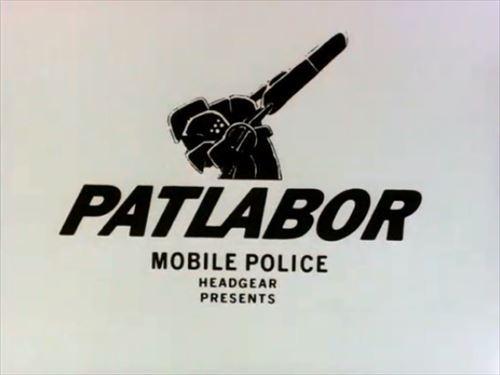PATLABOR MOBILE POLICE review: A fusion of futuristic police and robots

The Full Story and Appeal of the "Mobile Police Patlabor" OVA SeriesIntroductionMobile Police Patlabor, released as an OVA in 1988, is known as a work that breathed new life into the animation industry. This series was planned and released with the aim of overturning the conventional wisdom of original video animation (OVA) at the time in terms of format, price, and content. Here, we will explain in detail the whole picture and its appeal. Overview
CommentaryVol. 1 of "Mobile Police Patlabor" was released in April 1988, and was originally planned to be a 6-volume series. However, due to the enthusiastic support of fans, Vol. 7 was added. In addition to the main story, Vol. 1 1/2 and Vol. 6 1/2 exist, which are intended to provide commentary on the work, and Vol. 7 1/2 was released around the time the first theatrical version, "Mobile Police Patlabor the Movie," was released. These additional episodes and commentary videos add even more depth to the work. castThe cast of this film is as follows:
Main StaffThe following staff members are involved in the production of this work:
subtitleThe subtitles for each episode are as follows:
Appeal and evaluation of the workSet in a near-future Tokyo, Mobile Police Patlabor depicts the exploits of Special Vehicle Section 2, which uses giant robots called "Labors" to solve crimes. The film combines director Mamoru Oshii's meticulous direction with Masami Yuki's character ideas, Akemi Takada's character designs, and Yutaka Izubuchi's mechanical designs, making it a work that stands out for its visual beauty and clever storytelling. In particular, the human drama of the characters depicted in the process of solving each case deeply moves viewers. For example, in episode 1, "Deploy Second Platoon!", the members of Special Vehicle Section 2 come together for the first time and the process of building bonds as a team is depicted. Also, in episode 3, "The 450 Million Year Trap", the technical problems of the Labors and the characters' struggle to solve them are depicted realistically. Furthermore, episodes 5 and 6, "The Longest Day of the Second Division," depict the Second Division coming together to face a major incident, making them both tense and moving. Through these episodes, viewers can feel the growth and bond between the members of the Second Division. Additional episodes and explanatory videosVol. 7, "Special Vehicle Unit, North," an additional episode of this work, depicts the members of the Special Vehicle Unit 2 traveling to Hokkaido to tackle a new case. This episode was produced in response to fan requests, and is positioned as the final episode of the series. In addition, the explanatory videos in Vol. 1 1/2 and Vol. 6 1/2 provide detailed information about the background of the work and behind-the-scenes stories, making it a must-see for fans. Music and ArtThe music for this series was composed by Kenji Kawai, whose unique melodies enhance the atmosphere of the series. In particular, the theme song for the Second Special Vehicle Unit will leave a deep impression on viewers. Hiromasa Ogura's art realistically depicts a near-future Tokyo, enriching the worldview of the series. Recommendations and related worksMobile Police Patlabor has been made into not only an OVA series, but also a movie version and a TV series, and is loved by a wide range of viewers. In particular, the first movie version, Mobile Police Patlabor: The Movie, is known as a masterpiece that fully displays the talents of director Mamoru Oshii. The sequel, Mobile Police Patlabor 2: The Movie, has also been highly praised for its profound themes and beautiful visuals. If you enjoyed this work, we also recommend the following related works:
Through these works, you can feel the further achievements and growth of the members of the Second Special Vehicle Unit. In addition, other works by director Mamoru Oshii, such as "Ghost in the Shell" and "The Sky Crawlers," can also be enjoyed with deep themes and beautiful images. ConclusionMobile Police Patlabor began as an OVA series and has captivated many fans. Its detailed storytelling, beautiful visuals, and the human drama of the characters deeply move viewers. It is a work that you should definitely enjoy in its entirety, including the additional episodes and explanatory videos. You can also gain a deeper understanding and be moved by watching related works and other works by director Mamoru Oshii. |
<<: The appeal and reviews of "Topo Gigio": an anime experience not to be missed
Recommend
Final Destination: Bloodlines new trailer released on May 16
Today (March 26), the new film in the Final Desti...
"Dune 2" movie is about to release a new trailer: the prince rides on a sandworm
Timothée Chalamet will show how the Fremen prophe...
Nolan's "Tenet" failed miserably in North America! The global box office exceeded $200 million but it is difficult to make back the investment
As of last weekend in North America, Nolan's ...
The appeal and reviews of "Durarara!!x2: Final Chapter": A thorough explanation of the emotions and excitement of the final chapter
Durarara!!x2 Conclusion - Looking back on the exc...
"Godzilla vs. Kong" grossed over 1 billion yuan in China in 15 days
15 days after the monster movie "Godzilla vs...
"SSSS.DYNAZENON" Theatrical Compilation: A Fascinating Reassessment and New Perspectives
"SSSS.DYNAZENON" review and details ove...
Grimgar of Fantasy and Ash OVA's Appeal and Evaluation: A Special Episode That Fans Must See
Grimgar of Fantasy and Ash OVA - The Story of the...
Yamada Takayuki transforms into legendary AV director "Naked Supervisor" releases latest stills
The Netflix series "Naked Director", st...
"Dynasty Warriors" movie theme song MV behind the scenes Nazha shy
Today (April 28), the movie "Dynasty Warrior...
"Peninsula: Train to Busan 2" announced to be completed! Released in summer 2020
The sequel to "Train to Busan", "P...
The last R-rated X-Men? The New Mutants releases its first spooky poster!
According to foreign media reports, the first pro...
Movie fans found the only goof in Avengers 4: Doctor Strange was caught in the crossfire
The digital and Blu-ray versions of "Avenger...
The appeal and reviews of "SLAM DUNK": A masterpiece anime filled with basketball passion
"Slam Dunk" - The ultimate combination ...
New trailer for disaster film "Meet the Sharks" shows Stallone's daughter fighting a great white shark
Recently, the "Shark Attack" trailer an...
BAYONETTA Bloody Fate - A great combination of action and story
"BAYONETTA Bloody Fate" - The Witch'...









